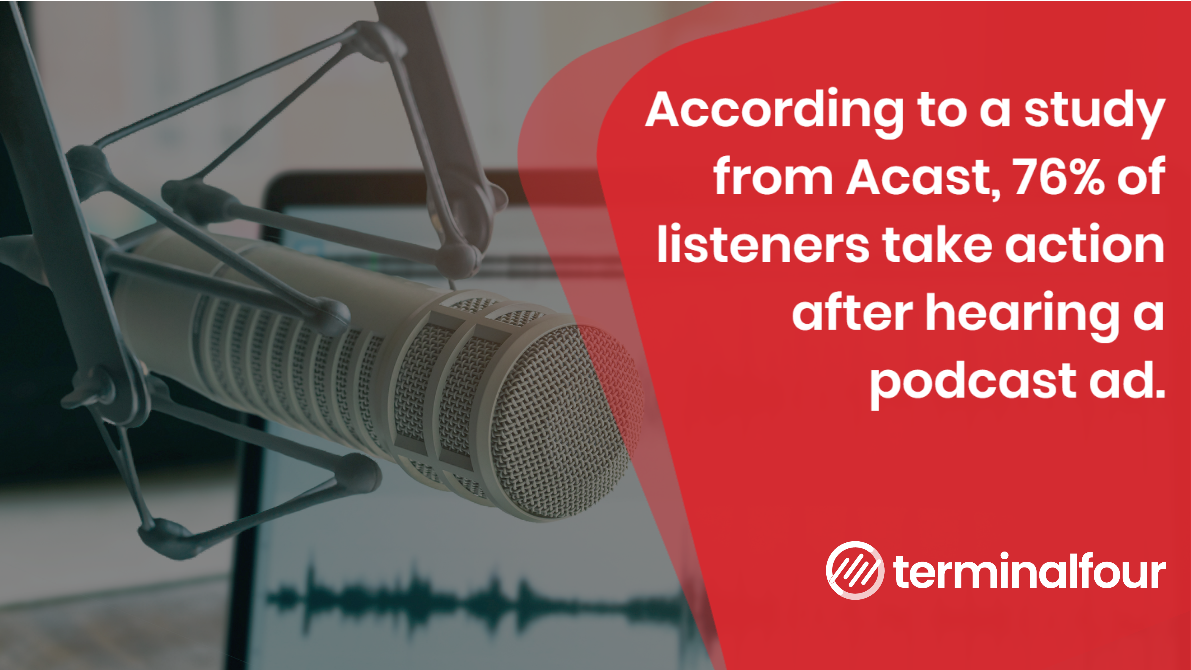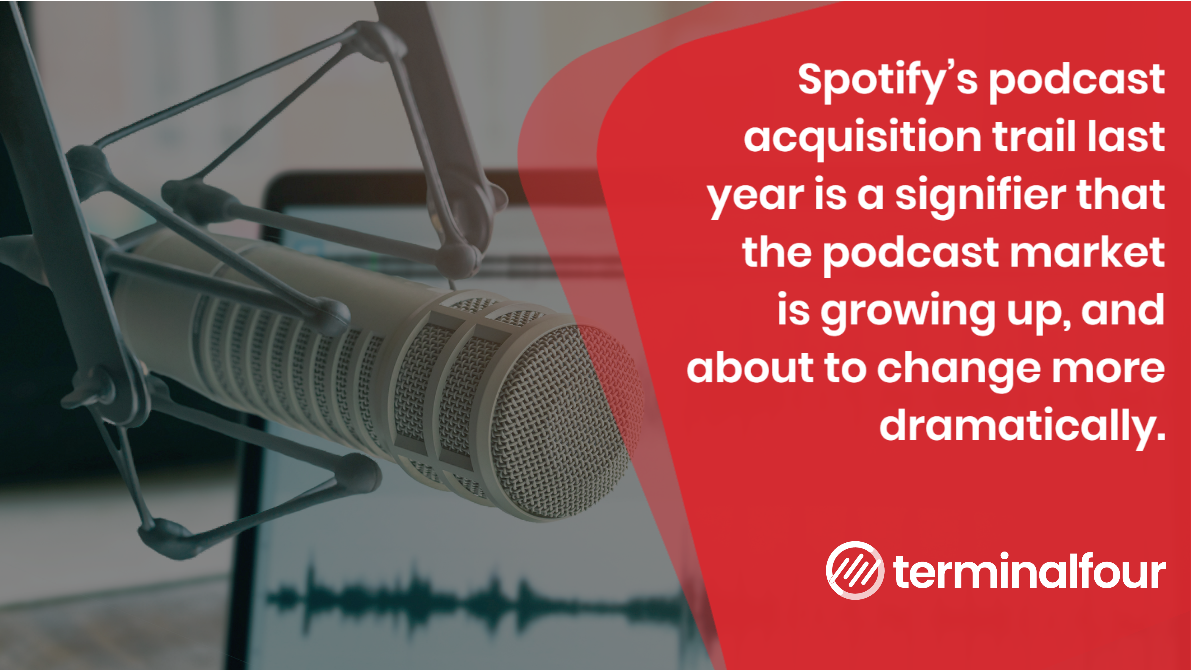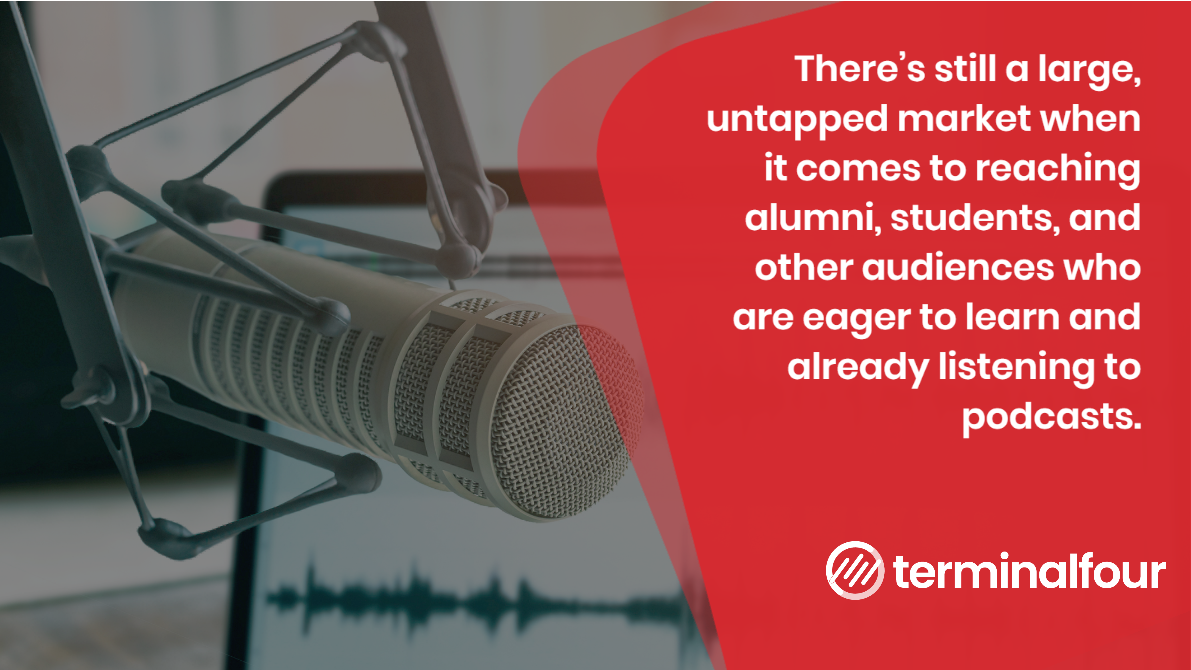In a world where diminishing attention spans are the norm, long-form content like podcasts are experiencing significant growth.
Around a fifth of people in the US, UK, Canada, and Australia regularly listen to podcasts, figures suggest. And in the 12-24 year old age range, Edison Research has found that regular podcast listening has risen from 11% of this demographic to 27% since 2013.
2020 could be the year podcasts cross into the mainstream
With over half a million podcasts now available worldwide, and thousands more coming online every day, the potential to reach audiences through podcasts has never been greater.
Podcast listeners also respond well to ads, scoring highly in terms of engagement, as well as responsiveness. According to a study from Acast, 76% of listeners take action after hearing a podcast ad, which could include visiting a site, making a purchase, or taking out a subscription.
And consider this. The average podcast is 45 minutes long and the typical ad length is 90 seconds, much longer than traditional formats. Added to which, audiences are highly attentive. 85% of people who listen to podcasts listen all the way through to the end, according to Edison Research.

What's behind the growth in podcast listening in younger audience groups?
Well, let's start with the appetite for binging and content consumption.
Youth audiences have grown up with Netflix and on-demand media. Committing to and remaining loyal to a series of content feels natural and beneficial.
Podcasts are also perfect for multi-tasking.
Listening can fit around other life commitments. You can select a podcast, and access it in the car, whilst cooking, walking or in the gym. This pick up and put down mentality and ability to multitask means that listening to podcasts while doing work or other activities is very attractive to younger audiences, such as students, who are often stretched for time as it is.
Phones now have great 4G coverage and 5G is on the way. There's good wi-fi in public. We have Bluetooth-connected cars. Smart speakers like Amazon Echo and Google Home feature in many homes. Audio is easier than ever to consume.
And with an average of only 4 minutes of advertising in an hour versus 16 for TV, there is arguably less ad clutter and less reason to try to ad-block or leave to do something else while the ad is running.
Spotify's game-changing involvement in the podcast market
Podcasts are in some ways a strange phenomenon. They've been around longer than YouTube, and yet it is still considered an emerging medium.
This is thanks, in part, to advertising techniques that have until now had more in common with radio broadcast than the Internet as we know it.
Spotify's podcast acquisition trail last year, however, is a signifier that the podcast market is growing up, and about to change more dramatically.
The Swedish firm pledged to spend over $400m on podcast-related acquisitions and content last year, a move designed to put the platform ahead of music streaming rivals such as Amazon Music whilst also increasing its ad revenue potential.
This makes perfect sense for Spotify. The company can combine its technologies in music and audio to enable people to find more podcasts they like, more conveniently. There are 16,000 different 'signals', the company says, that help it to do that.
Meanwhile, they can deliver highly targeted ads relevant to audience groups with the deep level data they already hold on their customers.
Naturally, Spotify and other platforms will need to strike the right balance so that audiences aren't turned off by the increasing sophistication of ad targeting, but the potential is huge if they can get this right.

The multiple benefits of universities investing in podcast content
In addition to being a touchpoint for alumni, staff and broader stakeholder groups, podcasts also have immense potential for classroom use. Faculties can select topics, develop accompanying discussion guides and other materials and integrate podcasts into the curriculum.
According to a 2017 survey of UK podcast listeners by eMarketer, 26% of people who tune into serialized audio do so because they want to learn something.
As interest grows in life-long learning and shorter format education experiences, podcasts are becoming increasingly important as a way to deliver high-quality educational content to a broader audience on the move.
They also allow people to stay connected with their university and remain intellectually engaged long after they graduate. Without the pressure to directly sell a product or service, universities can focus on creating educational content that will help advance their mission and extend their outreach.
And with the growing sophistication of ad placement and developing market for podcasts in younger audiences, 2020 could be the ideal time to begin experimenting not just in content production, but targeted advertising reaching prospective students where they're already spending time.
Podcasting is truly an opt-in medium that creates listener trust, fosters intimacy and is measurable. Additionally, most ads come in the form of a host-endorsed message (although Spotify will include visual ads too), which is an incredibly effective method of engagement.

What does the future hold for higher education podcasts?
There's still a large, untapped market when it comes to reaching alumni, students, and other audiences who are eager to learn and already listening to podcasts.
And whilst there are millions of podcasts covering every topic under the sun, there aren't too many examples of great podcasts from the higher education sector. Universities have a wealth of content available and those who seize the opportunity will get established early in this space.
The listeners are out there and the market has never been more primed for universities to enter it. Let's see what 2020 has in store for podcasts.
PS. If your institution has plans to extend its reach using podcasts this year or is dipping a toe into podcast advertising, we'd love to hear more about your activity in this area.

:format()//media/Podcast-Blog.png)